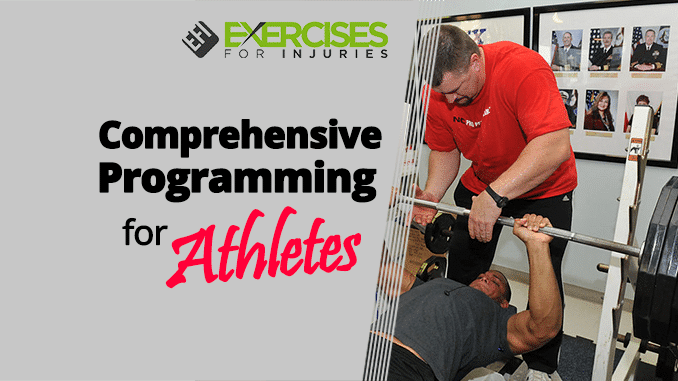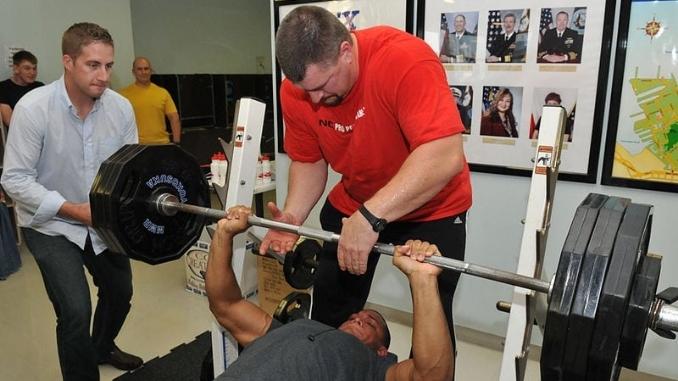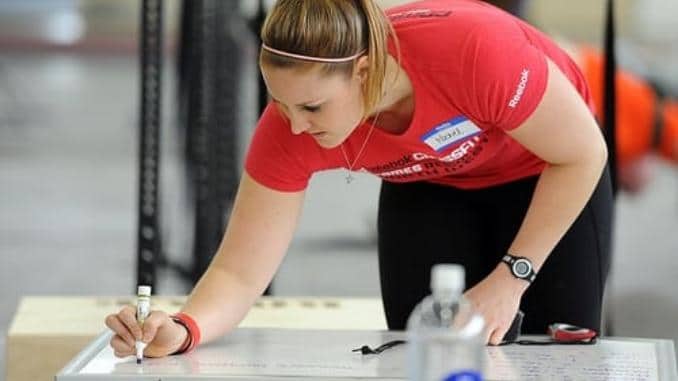
The amount of training information published on the internet is astounding. With very little effort, we can gain access many of the top professionals in the world to learn new techniques and training methods. Like you, I enjoy learning, so I read a lot of this stuff. I also watch plenty of videos and review numerous programs. Most of the time, this information focuses on the author’s area of expertise.
Powerlifting coaches talk about how to improve the bench, squat and deadlift.

Assessment experts talk about how to assess and diagnose different issues.
Bodybuilders talk about how to put on size.
We also see content focusing on speed, mobility, metabolic conditioning, corrective exercises, Olympic lifting, muscle imbalances, plyometrics, recovery techniques, core training, etc. All of these articles/videos give us new ideas to use as we train our clients. There are so many great ideas it can make your head spin.
Unfortunately, what I rarely see discussed is how to put all of these things together in a comprehensive program that addresses all the needs of an athlete without overtraining.
To add to the confusion, most of the techniques I read about actually work really well when you are able to focus all of your attention on one thing. For example, if all we needed to do was increase an athlete’s bench press, we could spend all of our time on it and get terrific results. We could take advantage of the awesome techniques we read about because we could dedicate all of our time and energy to one thing.
Unfortunately, sports performance doesn’t work that way. Athletes can’t just focus on one thing; they need to excel in a number of areas, and strength and conditioning professionals are burdened with the task of improving them all. This is what makes training a multi-dimensional athlete difficult.
If all we had to do was get really strong, programming would be simple. If all we had to do was worry about conditioning, life would be great.
That’s not how things work in real life. If we tried to use all the great training methods we see on YouTube, our training sessions would last six hours a day. Not only do we not have that kind of time, athletes simply can’t recover from enormous volumes of work. Don’t forget, they also have to practice their sport and compete – the most important parts of being an athlete.
So, when I read about a strength program or series of correctives, or even a conditioning routine, I always try to figure out if it can actually be used in real life, or if we have to stop doing everything else just to focus on one thing.
I remember being at a Gary Gray seminar years ago, where Gary was teaching some amazing assessment and corrective strategies. I learned a ton that weekend, and I was really excited to get home and start applying everything. Before I left, I asked Gary for his suggestions on how to apply all of this and still do all of the strength, speed, plyos and conditioning work we have to do.
Gary put his hand on my shoulder, looked me in the eye, smiled and said “I really don’t know. That’s why your job is so difficult.”
I’ll never forget that. At first, I was really disappointed. I thought Gary would have all the answers. Then, I realized that what he was saying is that it’s up to a coach to figure out how to manage all the pieces of the puzzle and get them to work in a way that produces results in many areas without having a negative effect on all the others. Whoa.
It’s really easy to have an idealistic attitude like “We just need to focus on one thing at a time,” but that usually doesn’t cut it. Can you really pick just one area to focus on for a high school football team? How about a girls soccer team that is very week, needs speed and conditioning and also needs to spend time including ACL prevention work?
Should you really pick just one area to focus on? Would that really be the right thing to do?
In my experience, you can make great progress in multiple areas as long as you plan and program appropriately. Of course, when you do this, you may not achieve maximal results in every area, but is that really the goal? Are we trying to break powerlifting records? Are we trying to power clean 400 lbs? Or are we trying to create great all-around athletes?
The overall improvements in all areas will outweigh the benefit of focusing exclusively on just one thing. We don’t want the biggest athlete on the field if he can’t move. We also don’t want an aerobic freak who gets knocked over every time she’s touched. We need complete athletes.
I get to see a lot of high school strength & conditioning programs and personal training sessions, and I’m shocked at how often these mistakes are made.
While it seems fairly simple, the concept of the Minimum Effective Doze (MED) should always be considered when programming for athletes with multiple needs. The MED is basically finding the minimum amount of work that needs to be done to elicit effective results.
This concept is standard in medicine. When administering a drug, you want to take the smallest amount possible that still cures the illness. Taking more than this won’t deliver better results, and may even be harmful. So, if you have a headache, and the bottle of Advil says to take two pills, you don’t take the whole bottle to “really knock it out.”
Training is similar. If 4 sets of 5 jumps twice a week has been shown to improve vertical jump by 2”, why on earth would you do 8 sets three times a week if the results are going to be the same? It may be possible to get a 2 ½” improvement if you do 10 sets, but doing all that extra work may lead to overuse injuries, so there is a risk involved with increasing the dose. Also, is the additional work worth the benefit if it means you can’t do something else?
You see, every time you choose to do an exercise, you are simultaneously choosing NOT to do every other exercise you know. There is only so much time and energy available, so you have to be as efficient as possible, which is why MED is so important.
Most training sessions last 60-90 minutes, and most athletes perform 2-4 training sessions in a week. The goal is to get as much done as possible without cutting into the ability to recover or perform well at sport practice and competition.
When you throw that last part into the equation, you realize that you can’t always train with brutal intensity. You can’t have a high school team squat for 90 minutes and expect them to be able to perform any kind of quality speed, agility or power work for the next two days. You may get good results on the squat, but you just lost the ability to do anything else worthwhile.
Instead, you could have used that 90 minutes to perform 20 minutes of speed & plyos, 20 minutes squatting, super-setting the squats with neck exercises, 20 minutes super-setting upper-body pushing and pulling (i.e. bench press and chin ups), 20 minutes on hamstrings and shoulders and saved 10 minutes for core and flexibility.
Setting up a workout this way will allow you to effectively train the entire body plus spend time on speed, power and flexibility. It will also allow the athlete to recover quickly so that training can be performed more frequently. For someone who needs work in many areas, this is the optimal way to make huge improvements as a complete athlete.
When working with athletes, we need to think about how to include as much as possible in many areas rather than focusing on just one area. Our goal should be to prepare the athlete for quality sport practice where they will actually improve at their sport.
Jim Kielbaso MS, CSCS is the Director of the Total Performance Training Centers in Michigan, a former college strength coach and the creator of multiple strength and conditioning products. He recently created a program for football coaches/players that covers all aspects of athleticism, delivers great results and allows plenty of time and energy to be spent on football-specific sill work. The program is called Maximum Football Training and can be found at http://MaximumFootballTraining.com.



